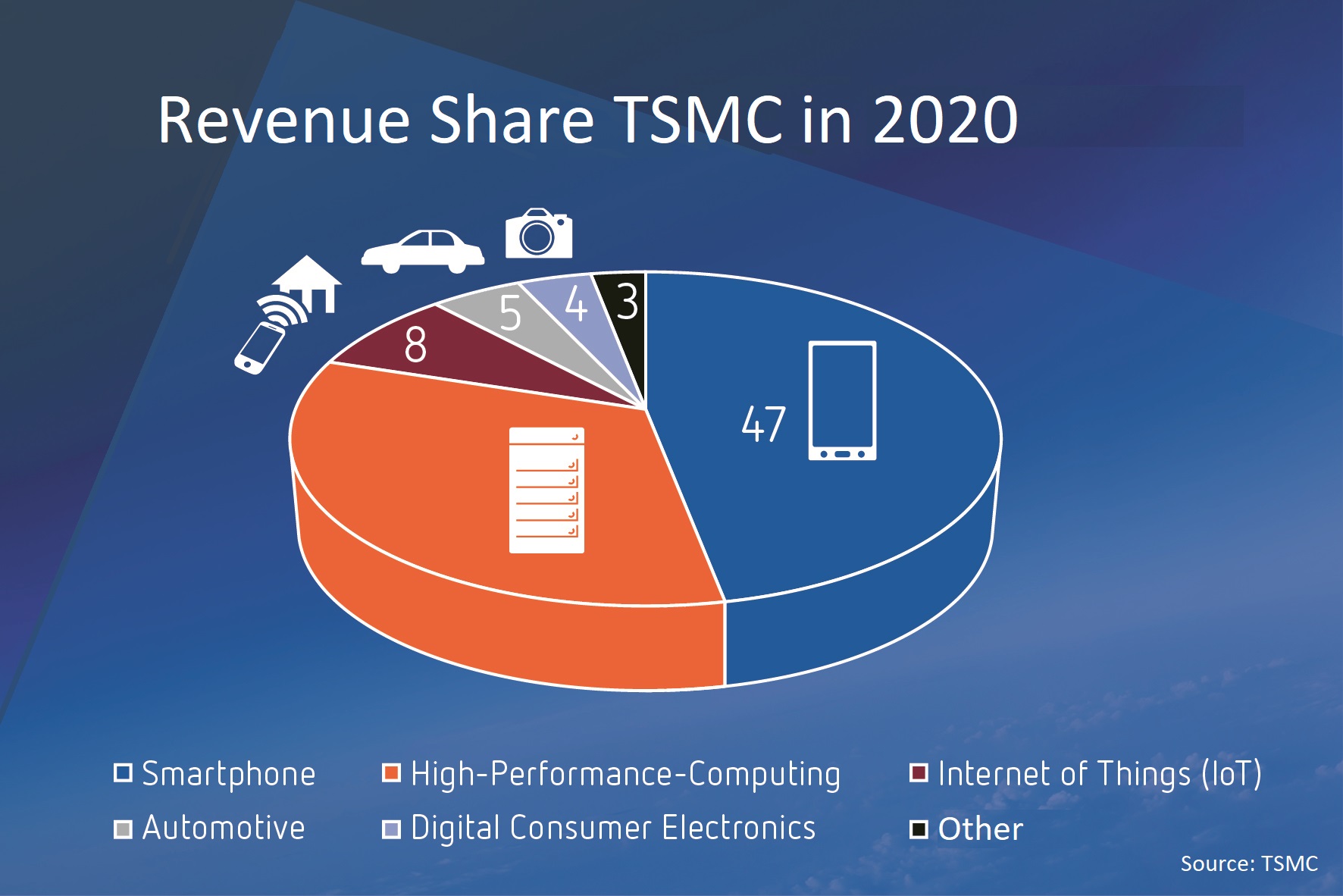|
|||||||||||||||||||||||||||||||||||||||||||||||||
| Nederlands | French |
Risks Are Often Underestimated - It Is Not Only the Chip Crisis that Threatens Embedded Manufacturers
With the chip crisis and the standstill of assembly lines in the automotive industry, supplier management has become a hot topic. Beyond the repeated shortage of semiconductors, there are other risks worth taking into consideration when selecting suppliers. The quality of a supplier for embedded hardware and software can determine the success or failure of a project. This article describes countermeasures for common threats and concludes how SEGGER’s emPower OS is the perfect risk minimizer.
IntroductionThe automotive industry was and is considered a showcase for processes optimized down to the last detail. Currently, daily news articles on how much this industry is suffering from the chip shortage are published not only in trade journals, but also in renowned business and daily papers. The main reason is that the world’s largest foundry TSMC is giving top priority to non-automotive applications (Fig. 1). The growing dependence of the automotive and many other industries on a few chip manufacturers in Asia has become a serious threat which Europe has ignored for decades. Politicians were of the opinion that semiconductors, like screws, were products that could be bought elsewhere on the world market as needed. This critical error will probably have an effect lasting at least until 2022. SEGGER’s emPower OS removes dependencies on vendors, vendor-specific toolchains, and vendor-specific software libraries and also minimizes other risks that can occur independently of the chip shortage in the development process. The following identifies the most important potential risks and explains how emPower OS helps to minimize them.
Figure 1: Foundry TSMC revenues by application in 2020. Source: TSMC. Which Are the Main Risk Categories for Embedded Developers?Potential risks can be roughly divided into three categories:
Do we anticipate potential shortages of supplied raw materials/products and thus a price increase? Are there any legal changes or innovations?
How stable is the supplier? Can their image have an impact on my company’s reputation? Do they work sustainably with regard to the environment and society? Are they reliable? What about quality and willingness to innovate?
Can the financial stability of a country influence my supply chain? What about compliance (corruption)? Do special rights or regulations have to be observed? Can regional natural hazards or pandemics have an effect on my business? The list of potential risk indicators is long and could be continued. However, not every criterion has an impact on every company. Rather, it is important to develop an individual risk management profile that addresses the specific situation of a purchasing organization. In the appendix you find a checklist helping the evaluate and minimize potential risks for embedded developers. Reducing Risks by Using SEGGER emPower OSIf you look at the individual risk categories, there are at least a few points to be considered across industries and suppliers, despite different needs for every buyer of embedded hardware and software. Product RisksStarting with the product risks, the chip shortage is just the tip of the iceberg. Almost every chip manufacturer offers its own IDEs and software components for its chips in addition to the pure silicon. It is not uncommon for partnerships to be formed with individual cloud providers in order to offer customers everything from a single source, including cloud connection. Plus all of this is usually free of charge, which looks attractive at first glance. What goes hand in hand with this, however, is the “locking” of customers to precisely these chips from this manufacturer and this cloud provider. Switching to another manufacturer usually requires an impractical amount of work for porting the software, not to mention retesting and debugging. emPower OS code is portable between microcontrollers and therefore provides agility and minimum disruption if a customer is forced to change microcontroller. It supports all popular microcontrollers and microprocessors in the market and provides an out-of-the-box experience for close to 1,000 devices. The customer may easily port applications in a couple of days instead of months and isn’t suffering from high risks because the customer application software doesn’t have to be changed. In additon the exchange of cloud providers is easy, too, because emPower OS may interface to all popular cloud providers. Corporate RisksAt least quantitatively, even greater risks lurk in the suppliers themselves. In general, a takeover — of which there have been plenty in the semiconductor and software industry in recent years — or even insolvency can never be completely ruled out, nor can the abandonment of “no longer strategic” business areas that may simply yield too low a margin. One example is the purchase of the formerly independent embedded software provider Micrium by the semiconductor manufacturer Silicon Labs, whose primary and understandable interest is of course to sell and support its chips and not those of STMicroelectronics, NXP, Renesas, or Microchip. Again, by using emPower OS the customer is independent of individual suppliers and products, the target hardware and accompanying cloud services function without relying on a single piece of infrastructure. This reduced reliance means lowered risk against discontinuation. One question in the case of development environments and embedded software libraries is what kind of license the customer has. With this license is it possible to migrate from one product to another in the event of insolvency or takeover or to continue with the licensed product. If it is possible, how difficult is it, what resources are required, and can you develop this further yourself? With a license subscription model, for example, the customer is not formally the owner of the software. If the manufacturer no longer exists, there is often no way to continue. Another example is software license management, where some vendors work with hardware locks (dongles) or network licenses. While with the latter one must not disregard the administrative effort (which employee can work with which license and when), a broken dongle means that for the time being work stops. And then there is the issue of software quality. An evaluation version without full functionality means that you simply cannot evaluate parts of the software — you have to rely on the supplier’s promise that these unreleased parts meet the required quality standards. SEGGER‘s licensing model for emPower OS is simple and risk-free for the customer: emPower OS can be delivered in source code form, enabling full transparency and portability. There are no opaque libraries. Under SEGGER commercial licensing, emPower OS is royalty-free. This means each license bought is a one-time payment, making the software a part of equipment expenses. These costs are static. For educational and evaluation purposes, usage of object code libraries is free. The customer can evaluate the full version with complete functionality before licensing the software. Also relevant for the effective product costs of a software are questions as to whether a supplier is prepared to work with individual customers at all in the event of a need to adapt its software, and to what extent, and what support is offered. This is particularly true if software components are purchased from several suppliers that must then work together optimally, because “running out of the box” will hardly be feasible in such cases: An RTOS from supplier A, an IP stack from supplier B, a crypto and security module from supplier C, all of this will require a more or less manual adaptation effort. If the customer is Apple or Samsung, support from the supplier is unlikely to fail, but what about small or medium-sized companies that are much larger in number? emPower OS provides all the components a software developer needs for developing embedded applications. These include a real-time operating system, wired and wireless connectivity, floating point arithmetic, data compression, and safety/security when connected to the cloud. There is no need to integrate third party software which reduces the risks and costs of the development process. Furthermore, emPower OS is supported by SEGGER engineers and is continually improved and enhanced, and SEGGER’s developers are happy to work with individual customers to find a solution even for exotic hardware. Country RisksA few years ago, the so-called “Entity List” of the U.S. government, a kind of blacklist of Chinese companies, gained notoriety among the country risks. Not only do U.S. companies need special permits to supply the listed companies with their products, but a license is required to supply products that incorporate IP or components from U.S. companies or that were developed in the United States. It can therefore certainly do no harm when purchasing that hardware and software components from suppliers to ensure these components can be installed without the end product developed with them being affected by export restrictions. In the worst case, this would require an expensive and time-consuming redesign. emPower OS is not covered by a viral license, therefore there is no threat of litigation from the FSF or other copyright holders for non-compliance, potentially forcing disclosure of source code. It is also developed within Western Europe and is not encumbered with US export restrictions and contains no US-developed code. Conclusion: SEGGER emPower OS Allows Customers to Avoid Unnecessary RisksSEGGER Microcontroller offers risk minimization by default: SEGGER’s IDE and embedded software components, developed, tested, and proven over many years, are bundled into its All-in-One emPower OS. emPower OS can be licensed for all purposes and applications — independent of manufacturers and cloud providers — and can be fully evaluated under SEGGER’s Friendly License. emPower OS supports hundreds of board support packages (BSPs) and drivers, e.g. for Ethernet and USB — across manufacturers and chips. Customers of emPower OS therefore have the ability in times of chip crisis to switch from one manufacturer to another without major software porting efforts. In conclusion, emPower OS is a complete embedded operating system covering all embedded use cases from Edge/Cloud/IoT to industrial control and much more. emPower OS is a highly scalable solution. It runs on devices of all scales; from tiny, ultra low-power devices to high-performance machines. This means it suits the purposes for many kinds of enterprise and business applications. Libraries not required are not linked to the firmware leaving room for the actual application. SEGGER software is available at a one-time fixed price without hidden follow-up costs. The customer always owns the product license, which is available as source code for all products including the IDE Embedded Studio. And everything is “Made in Germany”. Appendix: Checklist for Risk Evaluation and MinimizationIn order to avoid the above-mentioned and other risks, an individual survey and strategy is required in each case — there is no such thing as an off-the-shelf risk analysis and certainly no such thing as off-the-shelf risk management measures. Nevertheless, there are some general measures that always contribute to risk minimization, e.g.
17-06-2021 |
|
 |
|||||||
 |
 |
 |
 |
 |
 |
||









 Read more
Read more